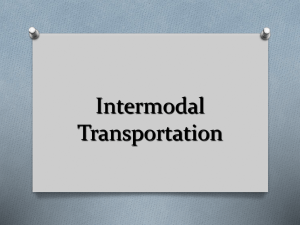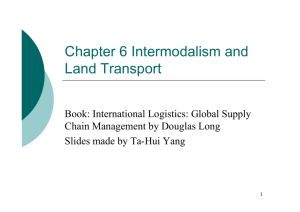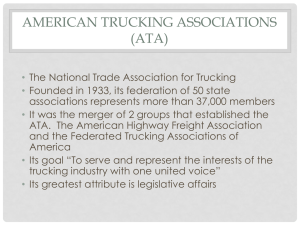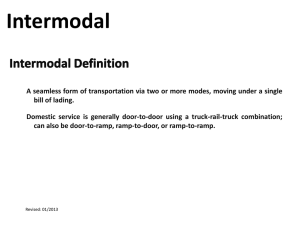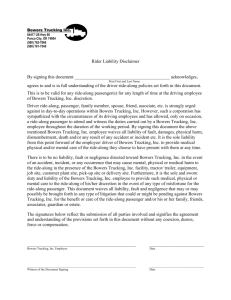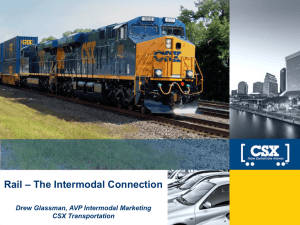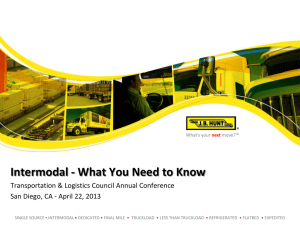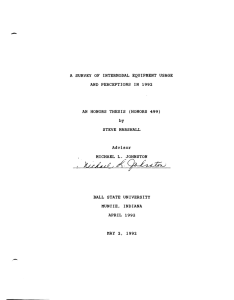Mark Young, President, Integra Logistics Services, LLC
advertisement
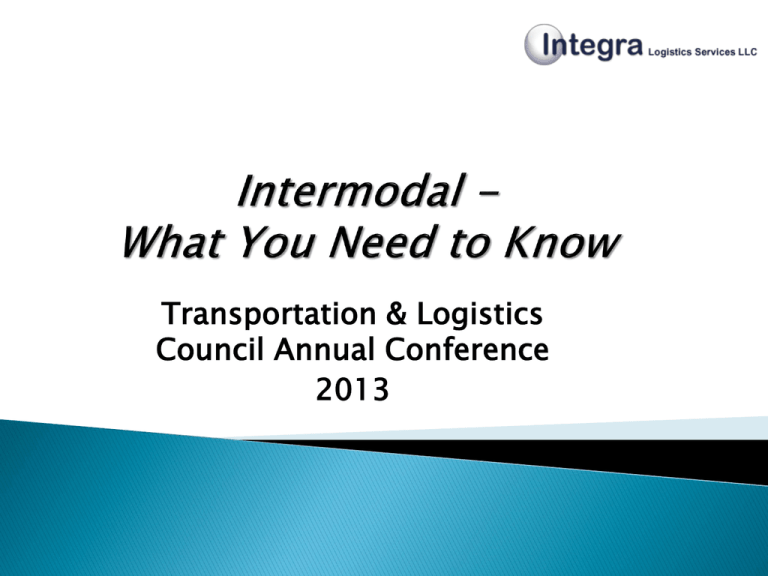
Transportation & Logistics Council Annual Conference 2013 Corporate Headquarters: Houston, TX Operating Offices: Chicago, IL Dallas, TX Los Angeles, CA Houston, TX Rutherford, NJ St. Louis, MO Tampa, FL Utilize Integra’s experienced personnel and its proprietary web based technology systems to deliver an unparalleled customer service experience to our clients and their customers Intermodal Services Highway Services Supply Chain Solutions Warehousing Solutions Technology Systems Load Design & Product Integrity Solutions Large network of flexible capacity Supply Chain strategy expertise and best practices Combine advantages of single source with flexibility of large provider base Technology Pope’s inauguration in St. Peters Square in Rome. A very telling illustration as to our advancement in technology, just over the course of 8 years. A seamless form of transportation via two or more modes, with authority under a single bill of lading. Union Pacific Railroad (UPRR) Burlington Northern Santa Fe (BNSF) CSX Norfolk Southern (NS) Canadian National (CN) Canadian Pacific (CP) Kansas City Southern (KCS) Florida East Coast (FEC) Containers (COFC) Trailers (TOFC) Refrigerated Trailers/Containers 20’ 40’ 45’ 53’ 28’ 53’ 20’ 40’ 45’ 53’ Bulk ISO Tanks Rail Decks – 53’ flatbed Private/Railroad Container Assets Private Railroad Owned Dry Owned Dry Containers Containers 52% 48% North American Domestic Containers ~175,000 Highway Congestion is bad and getting worse Today Equipment and driver shortages make service performance increasingly erratic Fuel increases introduce sudden spikes in freight rates Hours of service changes 2020 The Federal Motor Carrier Safety Administration (“FMCSA”) published final driver hours of service rules in December 2011, to be effective July 1, 2013. Among the changes are more restrictive requirements covering driver use of the 34-hour restart rule and a new mandatory 30-minute rest period after 8 hours on duty. The trucking industry association and consumer advocate groups both appealed these changes before the court in March 2013. The court has not yet issued a ruling. Assuming the rules are adopted without change, we currently believe the new rules will result in a decrease in truck productivity and could tighten up supply relative to demand in the freight market. Growth was the name of the game in intermodal for 2012. Most providers saw shippers shift their capacity strategy from over- the-road to intermodal to eliminate some of the pressures of the long haul trucking industry such as fuel cost and driver capacity. As the railroads continue to improve reliability in their network, intermodal becomes a much more viable option even with longer transit times. Shippers are adapting and taking advantage by just planning out longer lead times. Dray and railroad costs continue to push rates higher, but at a much more tempered pace than the over the road carriers. Market analysts anticipate the same in 2013 with rates climbing about 3-5 percent overall. The worsening driver shortage will continue to impact capacity and apply strong upward pressure on rates in 2013 regardless of the direction of the economy. Market analysts suggest in 2013 truckload rates will climb about 68 percent overall. Simply stated – it is widely accepted that the driver shortage is a long-term trend in the trucking industry that will be minimally impacted by the monthly swings in the U.S. economy. The most recent survey of for-hire trucking executives by Randall Reilly Market Place Survey bears this point out. In February of 2011, driver availability became the area of greatest concern for trucking executives and has remained the top concern of executives since by a wide margin in this survey. Transportation line haul savings vs. OTR Lower FSC vs. OTR based on mileage Capacity Speed and reliability has and continues to improve Length of haul that works has been reduced High value cargo services available Claims are low Green Friendly Contracts with all class one, smaller regional, Mexico, & Canadian railroads. Multiple resources for capacity The ISP manages drop pools and equipment Creating synergies within ISP’s network Optimizing shippers network The ISP arranges all legs of the move with service providers including origin drayage, rail linehaul, and destination drayage The ISP monitors shipments and handles all service issues directly with service providers to ensure on-time deliveries. Customer asset reduction through outsourcing. Takes ownership of the claims process Communications Employ External Expertise Few mid sized manufacturers have the time and internal expertise to effectively manage day-to-day delivery operations. Most understand this reality and readily look for external expertise. Transportation Strategies Rank Use capable service providers 1 Enhance transportation processes 2 Adopt transportation technology Collaborate with major customers 3* 3* Collaborative Distribution According to mid-sized manufacturers, their quest for greater collaboration is enhanced by 3PL providers with strong customer relationships. 3PL Capabilities Rank Customer relationship management 1 Flexible transportation capacity 2 Data capture and analysis 3 Performance metrics compliance 4 Logistics network optimization 5 Integra Logistics Services, Inc. Corporate Offices 4760 World Houston Parkway #180 Houston, TX 77032 281-227-8888 www.intlog.com


